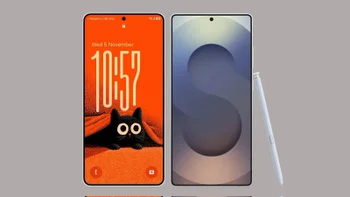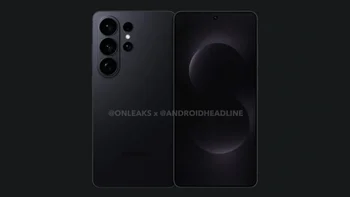Attention, gamers: Your smartphone display's super-high resolution means little, and here's why

Tests and results
What the folks at GameBench did is fairly simple — take screenshots of the same levels in various popular games on an iPhone 6 (a 720p screen), iPhone 6 Plus (1080p), and Galaxy S6 (1440p), and then layer 100% (or higher) crops on top of them to showcase the supposed advantages (or lack thereof) of higher resolution. Before we move on to the actual samples, however, two important clarifications must be made. Firstly, depending on the game, a higher resolution screen could both mean better image quality or not at all, depending on the game has been coded and if it even has the required art/texture/effects assets to take advantage of the higher resolution. A good example is Asphalt 8, which doesn't look any better on the S6, despite the much higher resolution compared to the two iPhones. And secondly, even if the game in question does have the necessary assets to run at native 1440p, the typically simplistic nature of textures and effects available with most mobile games mean that you'll get less pixelation and jagginess, but not necessarily more information. See:

Crops from Asphalt 8 on the Galaxy S6 (left) and the iPhone 6 (right)
As you can see, despite the superior resolution, and even the fact that the screengrab from the iPhone has been upscaled so that both objects are equal in size, Asphalt 8 actually isn't looking any better on a 1440p screen, even when talking extreme close-ups. This doesn't apply to every game, though, as titles such as Modern Combat 5 and Dead Trigger 2 have appropriate assets for higher resolutions, and some of them are even complex enough to extend the gains beyond just less pixelated and jaggy surroundings:

Crops from Modern Combat 5 on the Galaxy S6 (left) and the iPhone 6 (right)
Notice the extra information available with the Galaxy S6 in this case — the stethoscope is more detailed and even the scrubs have further depth to them. Of course, by PC game standards, these gains are still laughable, and we can identify at least two factors leading to this. First off, developers behind PC games are faced with comparatively negligible storage concerns, whilst mobile game developers are usually pressured to keep the size of their titles within reason. So more comprehensive art assets could be avoided on purpose. And secondly, creating new textures for various resolutions (as is the case with Android and its army of devices with different screen resolutions and firepower) can be time consuming and quite expensive.
The above issue is only exacerbated by the simple fact that mobile games just aren't played on large enough screens for even fancier assets to make enough of a difference as to be a definitive competitive advantage. The below two screengrabs ought to illustrate our point perfectly — which one do you think looks better?
Hard to tell, right? And yet, the top screenshot is from the Galaxy S6 (so 2560 x 1440), while the bottom one was taken with the iPhone 6 (1334 x 750), and from Dead Trigger 2, which is among few games that offer some improvements to users with higher resolution screens. This is only an approximation of course — you're looking at 680 pixel-wide thumbnails, after all — but it's an illuminating illustration anyway, showcasing how little of that extra depth you'll perceive when playing the game on either of these two competing devices. The folks at GameBench have prepared several dozens more screenshots for your consideration, so make sure to check them out as well:
Conclusion
In conclusion, there are several factors that you should consider if you're in the market for a phone with a super high resolution, with the relatively tiny size of the panel being your main concern — your eyesight likely just isn't acute enough to notice. Even beyond that, you have to understand that not all games were created equal, and a non-trivial number don't really offer much more for high resolution screens compared to standard ones in terms of assets such as textures and effects. In fact, in certain games (even ones that render assets at 1440p), it's hard to even notice a reduction in object jagginess (Monument Valley, that's you). Why? Because the Galaxy S6, for example, doesn't always render scenes at 1440p, and in some cases simply upscales a lower res image to fit its display. And even if it did, the before argued point about simplistic textures still holds.
This isn't just a problem that can be fixed by display makers like Samsung or LG, though, as software developers have at least as big a role to play by ensuring that their games actually do look better on more advanced hardware. As it is, they seldom do, and while we can't blame them, we sure hope that further investments by both sides will eventually lead to tangible benefits. Of course, even if that does happen, it'll remain to be seen if as pixel-dense screens as 1440p panels really improve user experience, especially when considering that they don't come free — not for Samsung, and not for you.
source: GameBench
Follow us on Google News












Things that are NOT allowed:
To help keep our community safe and free from spam, we apply temporary limits to newly created accounts: